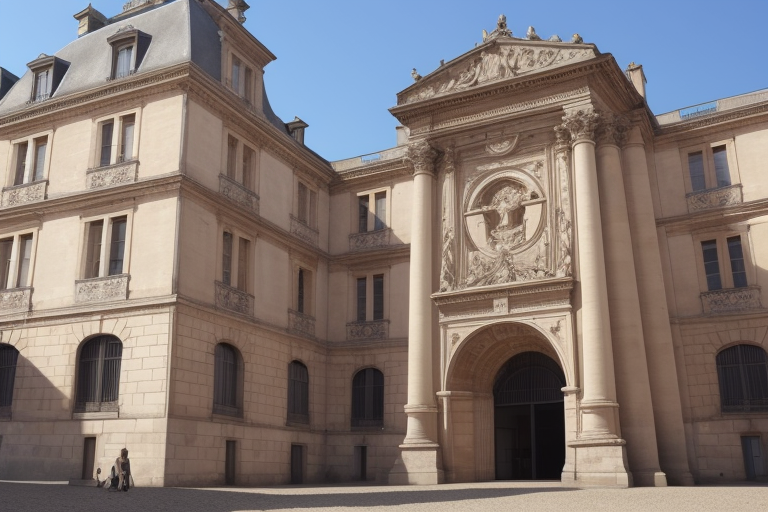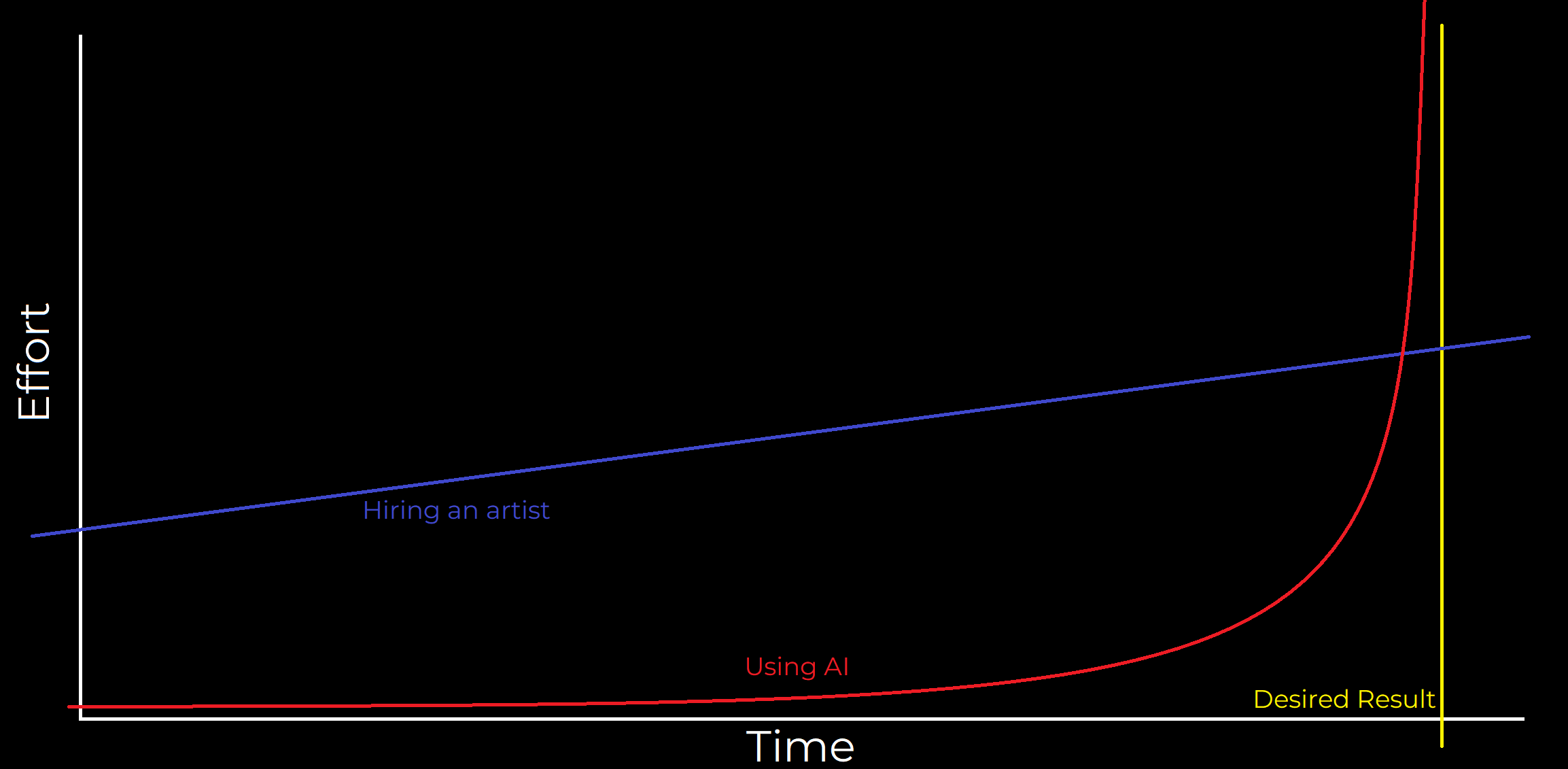AI art and its consequences have been a disaster for the art community.
No, not really.
In the following article, I will use AI and AI art after my defiintons:
AI
: Equivalent to machine-learining algorithm with added (tho limited) ability to think a bit.
AI Art
: Artworks/Pictures/Photos/etc. created, entirely or mostly, via Machine-learining tools.
I know these definitons are not the best, but they will do for now.
Introduction
AI Art, the ability to generate pictures/artworks/photos/etc. via prompting has gained massive popularity beginning in 2021 with the release of DALL·E, a website where you could write in a prompt and it would spit out nine variations of what it thinks your prompt meant.
Back then the images, and the ability to customize the results where… Limited.
Today however we can create magnificent pictures both with online services like Midjourney or locally (the better option) using stable diffusion.

The Side-Tangent
On a side-note, I say the local option is better than Midjourney because Midjourney IS stable diffusion. The difference is just that it takes your prompt, improves it, and then feeds it into the algorithm. The service you pay for in Midjourney is
- not needing a good GPU and
- a way of avoiding the garbage-in-garbage-out problem with prompting.
That is however completely avoidable by learning how to create good prompts. Maybe I will write a blog post about that in the future. Other advantages of using the locally running system is that no one but yourself can see the images you create and you can choose different models, you can choose extensions, and I am far to deep in this tangent.
Anyway, back on topic.
The Main Question
The art community has put out two important questions.
- Is AI Art, or rather the usage of pictures without the artists consent to train models, (intellectual property) theft?
- Is AI Art going to replace artists on the job market?
The first question is a long story for another time. What is intellectual property, if it even exists, if it can be stolen or not and what is and is not copyright infringement are topics far out of the scope of this blog post.
The second question ought to be answered in the simultaneously worst and most correct way.
Yes and No. It depends.(╯°□°)╯︵ ┻━┻
AI And Its Limitations
Many Artists think that AI Art will have the same effect Cars had on Horse-pulled carriages. Displacing them to the point of remaining only as novelties.
I would however argue that the development will be more in line with the effect calculators had on mathematicians (and those who had to calculate things for a living). What i mean is that artists will remain the world like mathematicians do,
they will simply not have to do stupid tasks anymore. Stupid tasks are tasks that can be done by a computer.
Cars have replaced horses because cars are better horses in every way. Because mechanical muscles are better than biological one. They don’t break easily, last longer and don’t tire.
Art however is an intellectual task. There is no Artificial Intelligence even remotely close to the capabilities of the human brain.
At least for the foreseeable future, following remains true:
“The computer is incredibly fast, accurate, and stupid. Man is unbelievably slow, inaccurate, and brilliant. […]” ― Stuart G. Walesh
Another (Exponential) Problem
Another problem with AI Art is the difficulty of getting a desired result. Prompting is like playing a game of Hot-and-Cold with an exponential difficulty increase the closer you get to the desired result.
The closer you get to your target image, the longer your prompt (and negative prompts) get, the more do these prompts interfere with each other, the more the image changes.
Getting a desired result usually looks the following way.
- First you define the general image image characteristics. Height and width in pixels, model to use.
- Now the difficulty starts.
You prompt what you think describes your desired picture the best. Then you generate. Generate a lot. In this step you are throwing things against the wall to see which AI Image looks the closest to your target. This is mostly defined my random chance and therefore has no effective upper limit on how long that might take. When you eventually have your mostest-closest image, you prompt more. And more. And more. Getting ever closer but never just reaching your target. Sure you could use what the AI created, feed it into an Image-editing software of your choice and make it into what you wanted, but now you reintroduced the artist into the equation. As you can see, getting rid of the artist is difficult, if you care how the result looks exactly. I have made a diagram to show what i mean:

In Conclusion
Since, if you care what the result is exactly, you still need artists and they will therefore not disappear. Not until we have brain-to-pc interfaces in our skulls. You will need artists either to curate and edit AI generated images or to create images from the beginning. We also need artists to create new art styles, which the AI can then be trained on. A calculator cannot use formulas that have not been created by a human beforehand.
Technology